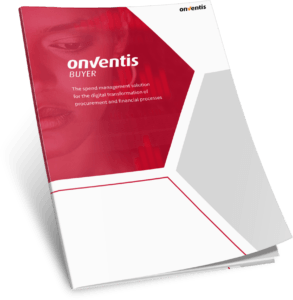Streamlining Business Operations: A Guide to Operational Procurement
Businesses seeking to streamline operations and drive sustainable growth should know that efficient procurement processes play a major role. At the heart of optimizing purchasing activities lies operational procurement—a crucial function ensuring the timely acquisition of goods and services necessary for day-to-day business operations.

Streamlining Business Operations: A Guide to Operational Procurement
Businesses seeking to streamline operations and drive sustainable growth should know that efficient procurement processes play a major role. At the heart of optimizing purchasing activities lies operational procurement — a crucial function ensuring the timely acquisition of goods and services necessary for day-to-day business operations.
Operational procurement aims to secure resources promptly and efficiently while achieving cost savings and maintaining quality. By effectively managing the flow of goods and services, businesses can enhance their supply chain, optimize costs, and improve overall efficiency. In this blog, we will delve into the world of operational procurement, exploring its different branches and highlighting the importance of handling each one — direct goods or services, indirect goods or services, and professional services — with careful consideration.
In operational procurement, sourcing strategies and workflows play a crucial role in acquiring the right goods and services from the most suitable suppliers, so we’ll talk about those too.
What is Operational Procurement
Operational procurement is a critical component of efficient supply chain management, encompassing the processes involved in acquiring goods and services essential for day-to-day business operations. This strategic function goes beyond simply purchasing items; it focuses on securing the right resources promptly and efficiently, ensuring the smooth functioning of the organization.
By strategically sourcing goods and services, businesses can optimize costs, negotiate favorable terms with suppliers, and identify opportunities for savings. Moreover, operational procurement plays a vital role in maintaining the quality of products or services offered and ensuring that they are delivered in a timely manner.
Whether procuring raw materials for manufacturing or acquiring essential services for daily operations, an effective operational procurement strategy contributes significantly to the overall success of a business.
To achieve these benefits, operational procurement requires a systematic and well-structured approach. It involves collaborating closely with suppliers, managing relationships effectively, and implementing robust processes to streamline the flow of goods and services.
Exploring the Branches of Operational Procurement
Direct Goods or Services
Direct goods or services are directly involved in an organization’s production process or final product. These items are essential for the core operations and directly impact the end product’s quality and functionality. Examples of direct goods include raw materials, components, machinery, and specialized equipment or software.
It entails carefully selecting suppliers based on their capabilities, reliability, and ability to meet specific quality standards. In direct procurement, stringent quality control measures are necessary to ensure that the acquired goods or services meet the required specifications. Additionally, precise delivery timelines are crucial for direct procurement, as delays can disrupt the production schedule and impact overall efficiency.
Sourcing strategies: Organizations build strategic partnerships with suppliers when sourcing direct goods or services. Key considerations include supplier capabilities, reliability, and adherence to quality standards. Long-term relationships with suppliers can lead to better pricing, preferential treatment, and improved collaboration, ensuring a steady supply of high-quality direct goods.
Workflow: Efficient demand forecasting and inventory management are critical in direct procurement. Accurate forecasting helps prevent stockouts and delays in production, while effective inventory management minimizes carrying costs and waste. Streamlined order placement, approval workflows, and supplier coordination enable the timely delivery of direct goods or services.
Indirect Goods or Services
Indirect goods or services are necessary for a business’s smooth functioning but are not directly involved in the production process. These items support the overall operations and administration of an organization. Indirect procurement categories include office supplies, IT equipment, maintenance services, utilities, marketing materials, and travel arrangements.
In indirect procurement, the focus shifts to optimizing costs and managing supplier relationships. Organizations strive to identify cost-effective procurement methods, such as group purchasing or leveraging e-auctions to drive savings. Effective management of suppliers is crucial to negotiate favorable terms, ensure timely availability, and maintain consistent quality for indirect goods or services.
Given the diverse nature of indirect procurement, organizations often adopt e-procurement software or platforms to automate and streamline procurement processes. These tools enable efficient requisitioning, approval workflows, and tracking of indirect purchases, leading to improved operational efficiency and cost control.
Sourcing strategies: Organizations often employ cost-effective procurement methods such as group purchasing or e-auctions for indirect procurement. Leveraging the volume of procurement across multiple categories can help drive cost savings. Effective supplier relationship management is essential to negotiate favorable terms and ensure timely indirect goods or services availability.
Workflow: Automation plays a significant role in optimizing indirect procurement processes. Implementing e-procurement software enables streamlined requisitioning, approval workflows, and tracking of indirect purchases. Clear communication channels and effective supplier management ensure the timely availability of indirect goods or services while controlling costs.
Professional Services
Professional services encompass outsourced expertise or specialized skills organizations require to support their business operations. Examples of professional services include legal, consulting, accounting, marketing, and IT services. These services often require deep domain knowledge and specialized capabilities unavailable in-house.
Procuring professional services involves evaluating expertise, reputation, and compatibility with the organization’s objectives. Organizations typically utilize a rigorous selection process, assessing the service providers based on their track record, industry experience, and ability to deliver results.
Clear service-level agreements (SLAs) are crucial in professional services procurement to define the scope of work, expected outcomes, timelines, and pricing. Effective vendor management, ongoing communication, and monitoring ensure that professional service providers meet the agreed-upon deliverables and maintain a productive working relationship.
Sourcing strategies: Sourcing professional services requires careful evaluation of expertise and compatibility. Organizations prioritize selecting service providers based on their track record, industry experience, and ability to deliver the desired outcomes. Clearly defined SLAs and ongoing vendor management facilitate successful engagements and ensure the quality and timeliness of professional services.
Workflow: Procuring professional services requires transparent communication and explicit project scopes. Defining SLAs and monitoring service providers’ performance against agreed-upon metrics is crucial. Ongoing collaboration, feedback mechanisms, and effective project management contribute to successful outcomes in professional services procurement.
E-Procurement for Operational Procurement Processes
Operational procurement forms the backbone of efficient supply chain management and plays a vital role in driving the success of businesses. Understanding the nuances of each branch—direct goods or services, indirect goods or services, and professional services—is essential for organizations to develop effective procurement strategies.
Organizations can achieve cost savings by strategically sourcing goods and services, maintaining quality, and ensuring timely delivery. Implementing tailored approaches and adopting technological solutions such as e-procurement software enable organizations to streamline processes, automate workflows, and enhance efficiency.
Embrace best practices and continuously optimize operational procurement so your business can position itself for sustainable growth, improved productivity, and a competitive edge in the market.
Weitere BlogsMore BlogsMeer blogs




